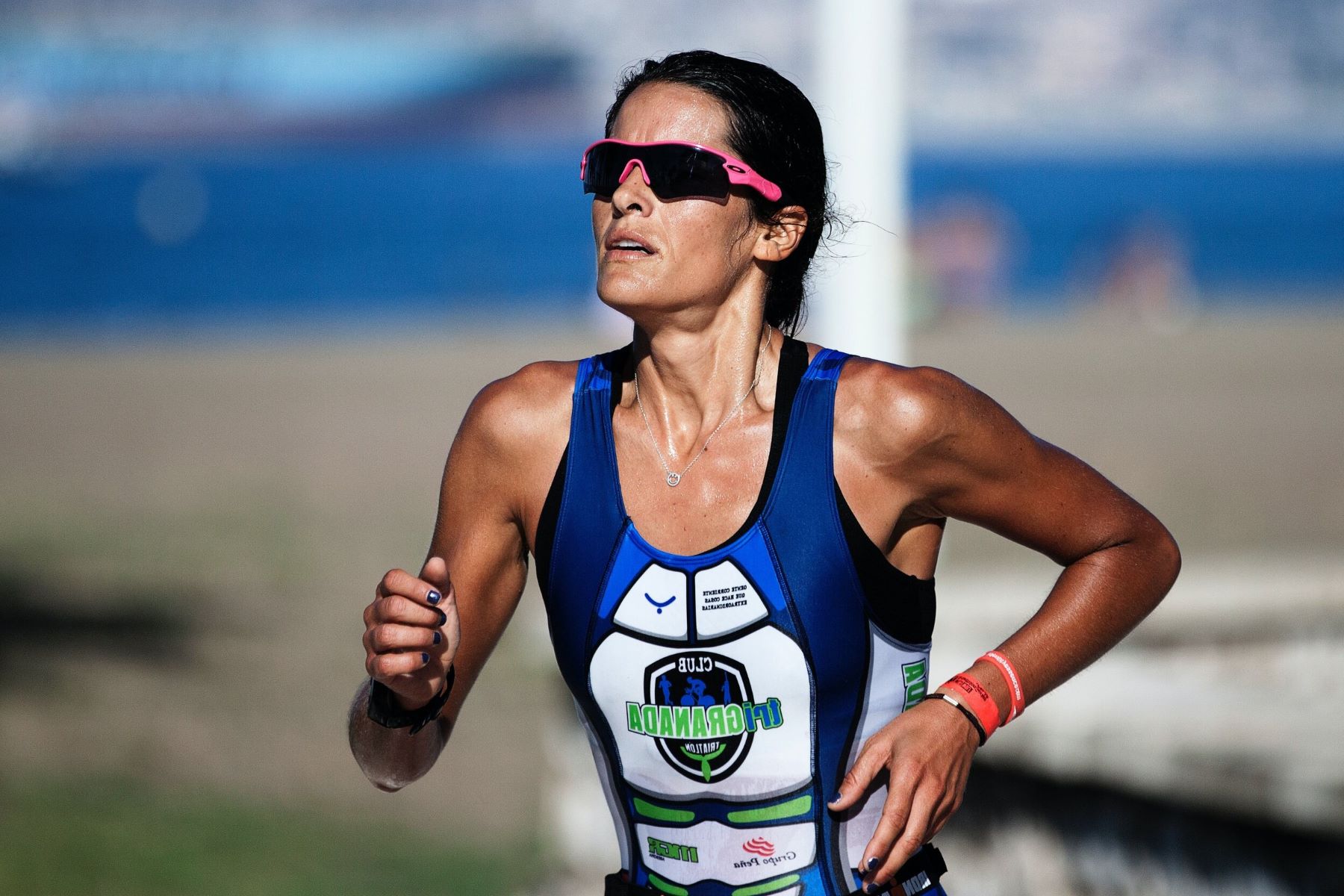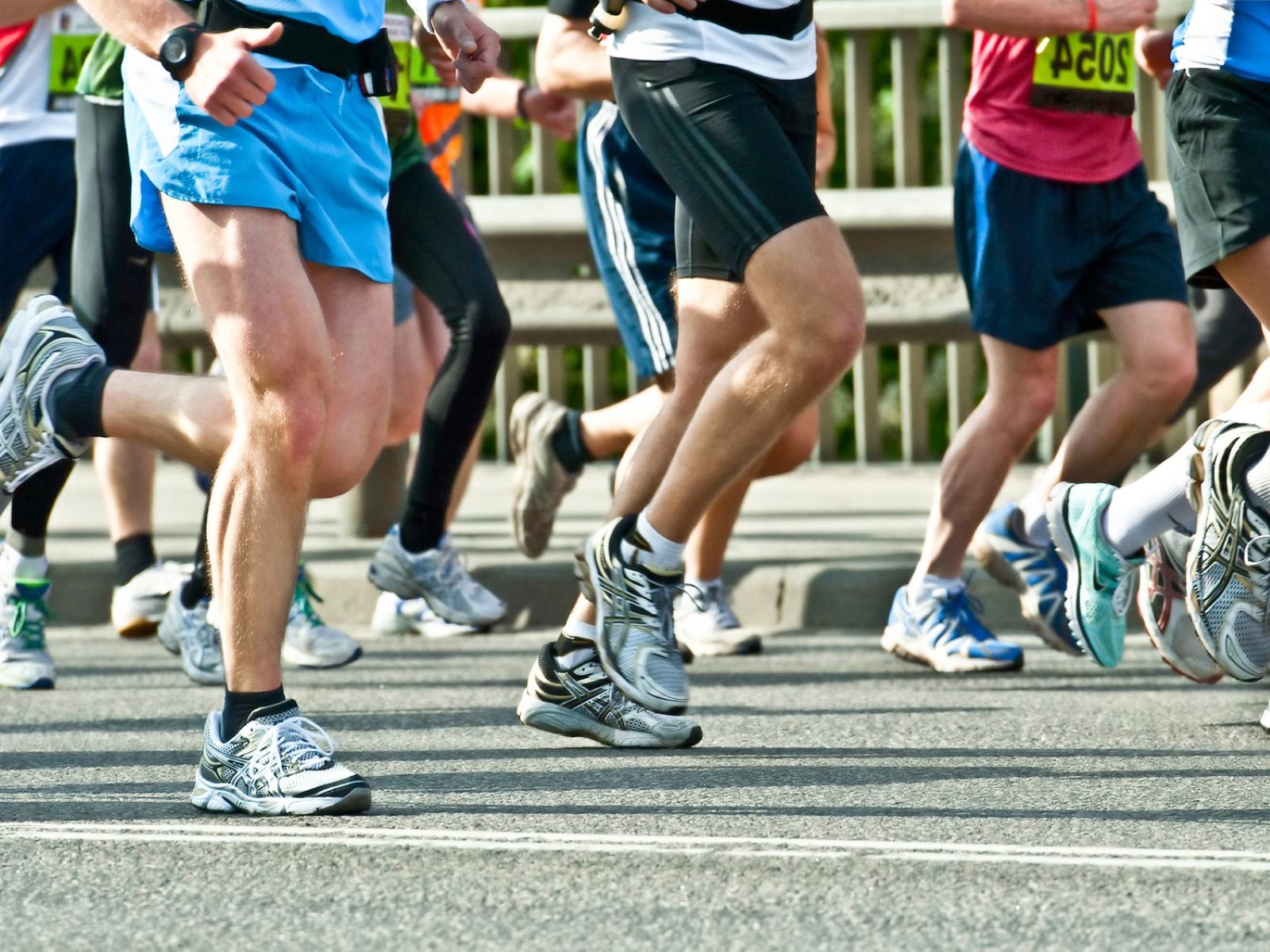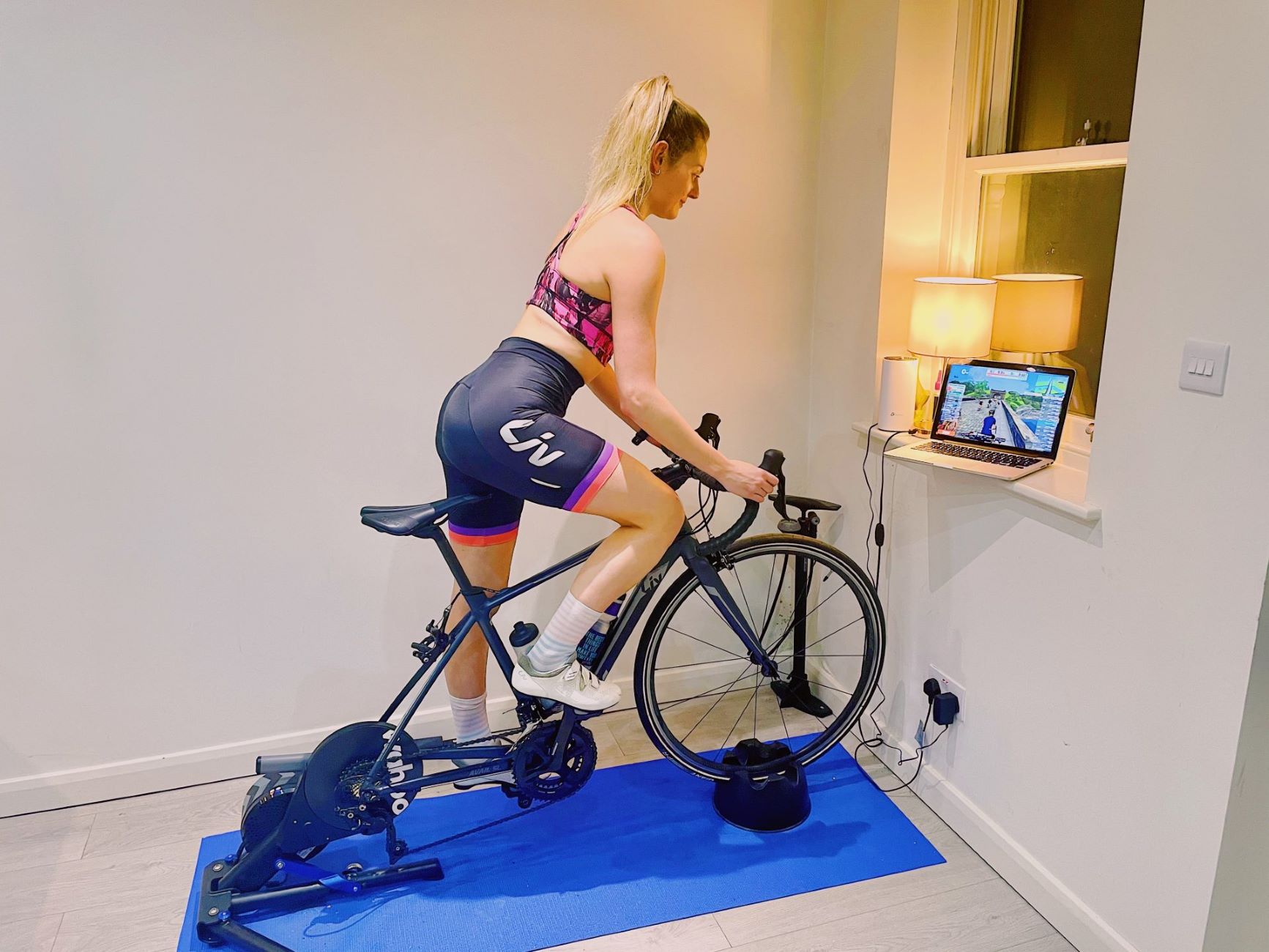Home>Health & Nutrition>Calorie Burn: How Many Calories Are Burned During Running?


Health & Nutrition
Calorie Burn: How Many Calories Are Burned During Running?
Published: February 21, 2024
Learn how running can help you burn calories and improve your health. Discover the calorie-burning benefits of this popular form of exercise. Find out more about health and nutrition.
(Many of the links in this article redirect to a specific reviewed product. Your purchase of these products through affiliate links helps to generate commission for Therunningadvisor.com, at no extra cost. Learn more)
Table of Contents
The Science of Calorie Burn
Calorie burn during running is a fascinating interplay of physiological processes within the human body. Understanding the science behind calorie burn can provide valuable insights into optimizing workouts for weight management and overall health.
When we engage in running, our muscles require energy to propel us forward. This energy is derived from the food we consume, which is converted into adenosine triphosphate (ATP) through a complex series of biochemical reactions. ATP serves as the primary energy currency in our bodies, fueling muscle contractions and enabling movement.
The intensity of running directly impacts the rate at which calories are burned. Higher intensity running, such as sprinting or uphill running, demands more energy and thus leads to a greater calorie burn. This is due to the increased recruitment of muscle fibers and the elevated heart rate, which elevate the body's overall energy expenditure.
Moreover, running triggers the afterburn effect, scientifically known as excess post-exercise oxygen consumption (EPOC). This phenomenon refers to the elevated calorie burn that persists even after the workout has concluded. Following a vigorous run, the body continues to consume oxygen at an elevated rate to restore depleted energy stores, repair muscle tissue, and regulate body temperature. Consequently, this extended calorie burn contributes to the overall energy expenditure associated with running.
Additionally, individual factors such as body weight, muscle mass, and metabolic rate play pivotal roles in calorie burn during running. Heavier individuals tend to burn more calories due to the increased effort required to move their bodies, while individuals with higher muscle mass have a higher basal metabolic rate, leading to enhanced calorie burn both during and after running.
In essence, the science of calorie burn during running is a multifaceted process influenced by the interplay of physiological, metabolic, and environmental factors. By comprehending these mechanisms, individuals can tailor their running routines to optimize calorie burn and achieve their fitness goals effectively.
Factors Affecting Calorie Burn During Running
Several factors intricately influence the calorie burn experienced during running. Understanding these variables is crucial for individuals seeking to maximize the effectiveness of their running workouts and achieve their fitness objectives.
1. Body Weight:
Body weight significantly impacts the calorie burn during running. Heavier individuals expend more energy when running due to the increased effort required to move their bodies. This is attributed to the greater work performed against gravity, resulting in a higher calorie expenditure compared to individuals with lower body weights.
2. Running Speed and Intensity:
The speed and intensity at which one runs directly influence the calorie burn. Higher running speeds and more intense workouts demand greater energy expenditure, leading to a higher calorie burn. For instance, sprinting or engaging in high-intensity interval training (HIIT) can substantially elevate the calorie burn due to the heightened muscular effort and increased cardiovascular demand.
3. Muscle Mass:
Muscle mass plays a pivotal role in calorie burn during running. Individuals with higher muscle mass have a higher basal metabolic rate, leading to an increased calorie burn during physical activities, including running. This is attributed to the fact that muscle tissue is metabolically active and requires more energy for maintenance and function, contributing to elevated calorie expenditure during workouts.
Read more: Can Running Help In Burning Fat?
4. Running Terrain:
The terrain on which one runs influences calorie burn. Running on inclines or uneven surfaces requires greater muscular effort and energy expenditure compared to running on flat terrain. Uphill running, in particular, engages additional muscle groups and elevates the heart rate, resulting in a higher calorie burn. Conversely, downhill running also requires energy to control and stabilize the body, contributing to calorie expenditure.
5. Environmental Factors:
Environmental conditions such as temperature and humidity can impact calorie burn during running. Running in hot and humid conditions elevates the body's thermoregulatory demands, leading to increased energy expenditure. Additionally, windy conditions can pose resistance, requiring greater effort and subsequently leading to higher calorie burn.
6. Fitness Level:
Individuals' fitness levels and running experience influence calorie burn. Well-trained runners tend to have greater running efficiency, allowing them to cover distances with less energy expenditure. However, beginners or individuals with lower fitness levels may expend more energy during running, leading to a higher calorie burn.
7. Gender:
Gender can also play a role in calorie burn during running. On average, men tend to have higher muscle mass and lower body fat percentages compared to women, resulting in a potentially higher calorie burn during running. However, individual variations in body composition and fitness levels ultimately determine the calorie burn for each person, irrespective of gender.
In essence, the calorie burn during running is a dynamic interplay of various factors, each contributing to the overall energy expenditure. By recognizing and understanding these influences, individuals can tailor their running routines to optimize calorie burn and progress towards their fitness and weight management goals effectively.
Calculating Calorie Burn for Different Running Intensities
The calorie burn during running varies significantly based on the intensity of the workout. Understanding how to calculate calorie expenditure for different running intensities is essential for individuals aiming to manage their weight and optimize their fitness routines effectively.
Moderate-Intensity Running
Moderate-intensity running, typically characterized by a comfortable pace that allows for steady breathing and conversation, is a popular choice for individuals seeking to improve cardiovascular health and endurance. When calculating the calorie burn for moderate-intensity running, a general rule of thumb is to estimate an expenditure of approximately 100 calories per mile for a 160-pound individual. However, it's important to note that this estimation can vary based on individual factors such as body weight, running efficiency, and terrain.
High-Intensity Interval Training (HIIT)
High-Intensity Interval Training (HIIT) involves alternating between short bursts of intense effort and periods of active recovery. This form of training has gained popularity due to its ability to maximize calorie burn and improve cardiovascular fitness in a shorter time frame. Calculating calorie burn for HIIT running involves considering both the intense intervals and the recovery periods. The calorie expenditure during the intense intervals is notably higher due to the elevated heart rate and muscular effort, contributing to a significant overall calorie burn for the workout.
Uphill Running
Running uphill demands greater muscular effort and cardiovascular output compared to running on flat terrain. When calculating calorie burn for uphill running, it's important to account for the increased energy expenditure resulting from the uphill ascent. The incline significantly elevates the intensity of the workout, leading to a higher calorie burn per unit of time compared to running on level ground.
Read more: Causes Of Hand Swelling During Running
Sprinting
Sprinting represents the pinnacle of high-intensity running, requiring maximal effort and exertion over short distances. The calorie burn during sprinting is notably high due to the explosive muscular contractions and elevated heart rate. When calculating calorie expenditure for sprinting, it's essential to recognize the substantial energy demand associated with this form of running, resulting in a significant calorie burn within a short duration.
In essence, calculating calorie burn for different running intensities involves considering the interplay of speed, effort, and duration. By understanding the distinct energy demands of each intensity level, individuals can effectively tailor their running workouts to achieve their fitness and weight management goals.
Tips for Maximizing Calorie Burn While Running
Running is not only a fantastic cardiovascular exercise but also an effective way to burn calories and manage weight. By incorporating the following tips, individuals can maximize their calorie burn while running, thereby optimizing the effectiveness of their workouts.
-
Incorporate Interval Training: Introducing intervals of higher intensity running into your workout can significantly elevate calorie burn. High-Intensity Interval Training (HIIT) involves alternating between short bursts of intense running and periods of active recovery. This approach not only boosts calorie expenditure during the workout but also triggers the afterburn effect, leading to continued calorie burn post-exercise.
-
Embrace Uphill Running: Running uphill demands greater muscular effort and cardiovascular output, resulting in a higher calorie burn compared to running on flat terrain. Incorporating uphill segments into your running route or utilizing a treadmill incline can effectively enhance calorie expenditure and overall workout intensity.
-
Engage in Sprint Intervals: Adding sprint intervals to your running routine can substantially elevate calorie burn. Sprinting involves explosive muscular contractions and a heightened heart rate, leading to a significant energy expenditure within a short duration. By incorporating short bursts of sprinting into your runs, you can maximize calorie burn and enhance overall metabolic activity.
-
Utilize Proper Running Form: Maintaining proper running form not only improves running efficiency but also optimizes calorie burn. Focusing on a balanced and efficient stride, engaging core muscles, and ensuring proper posture can enhance the effectiveness of each running step, leading to improved calorie expenditure over the course of a run.
-
Stay Consistent with Running Workouts: Consistency is key to maximizing calorie burn and achieving long-term fitness goals. By establishing a regular running routine and gradually increasing workout intensity, individuals can improve their overall running efficiency and elevate calorie expenditure over time.
-
Incorporate Strength Training: Integrating strength training exercises into your workout regimen can complement running by enhancing muscle mass and metabolic activity. Increased muscle mass leads to a higher basal metabolic rate, contributing to elevated calorie burn not only during running but also at rest.
-
Stay Hydrated and Nourished: Proper hydration and nutrition play crucial roles in optimizing calorie burn during running. Staying adequately hydrated and fueling your body with nutrient-dense foods supports optimal metabolic function, ensuring efficient calorie expenditure during workouts.
By implementing these tips, individuals can effectively maximize calorie burn while running, leading to improved fitness, enhanced weight management, and overall well-being.













